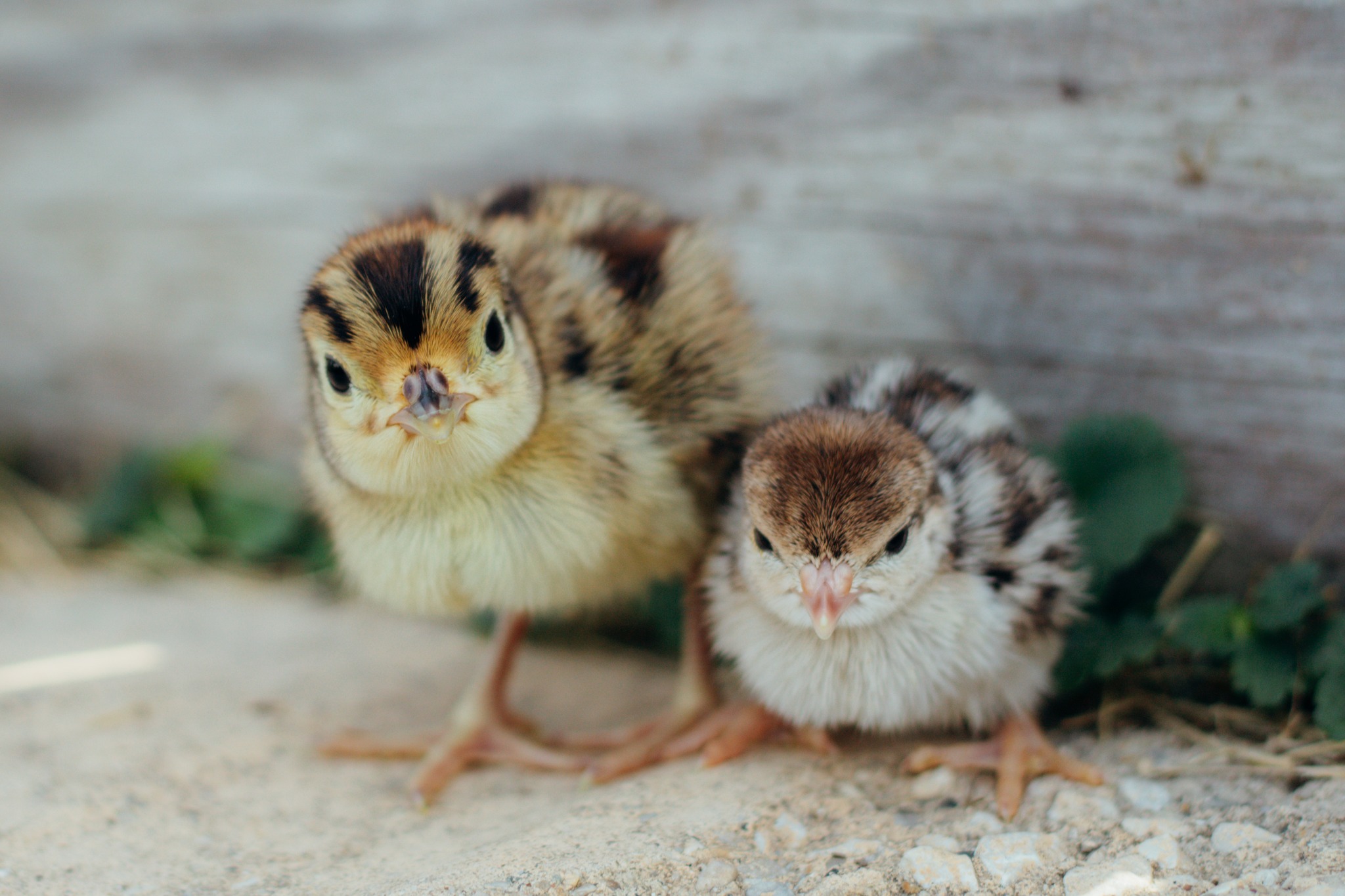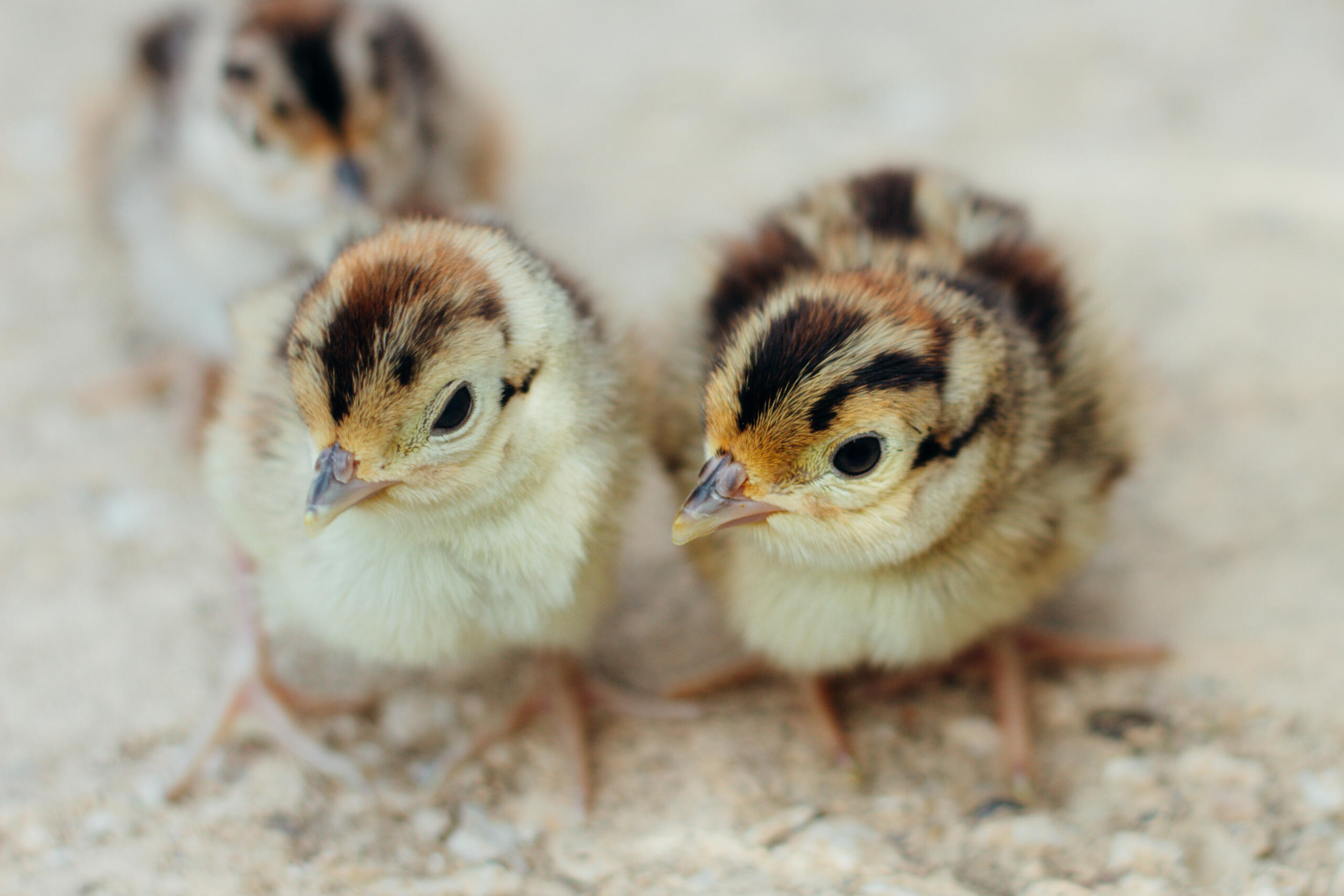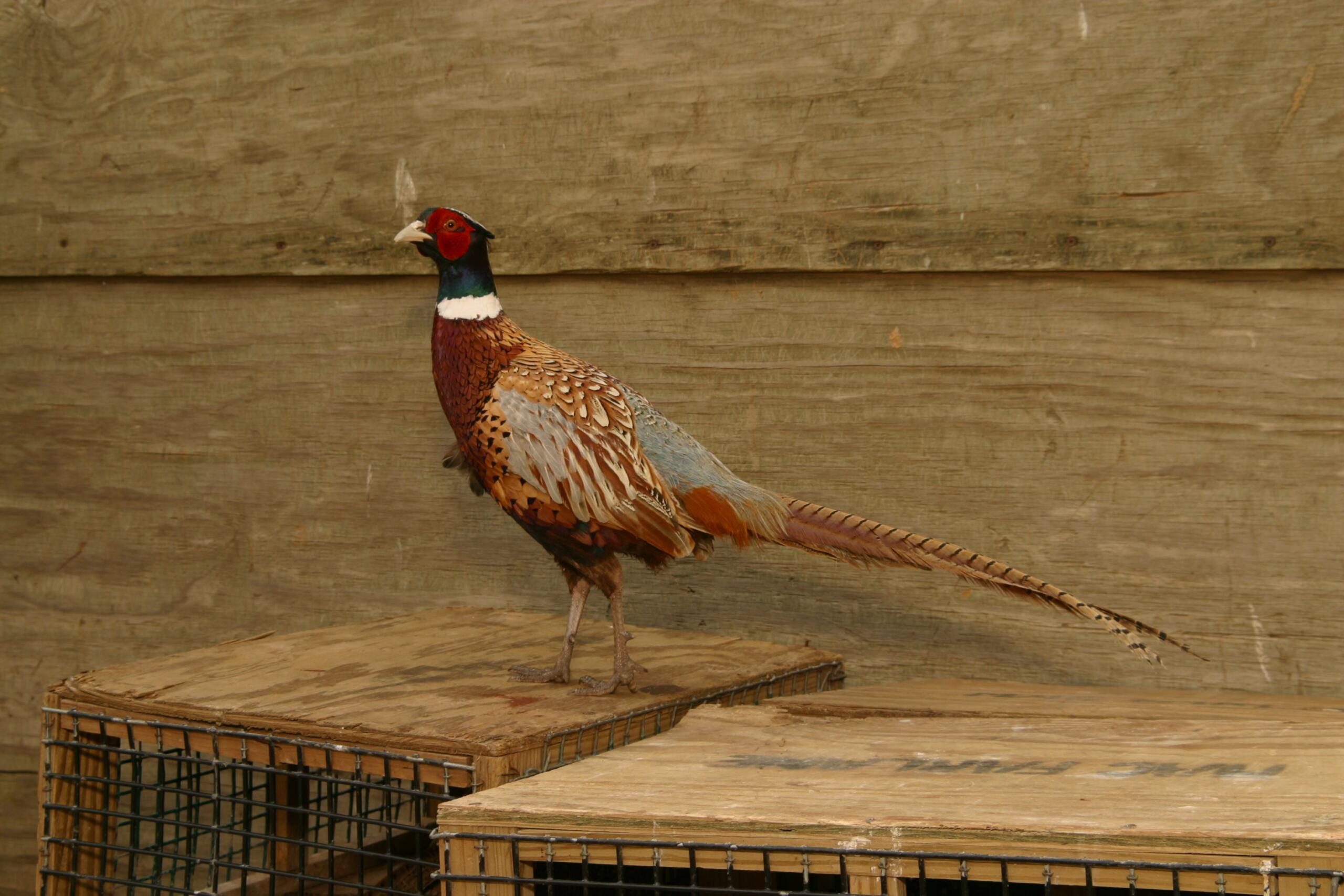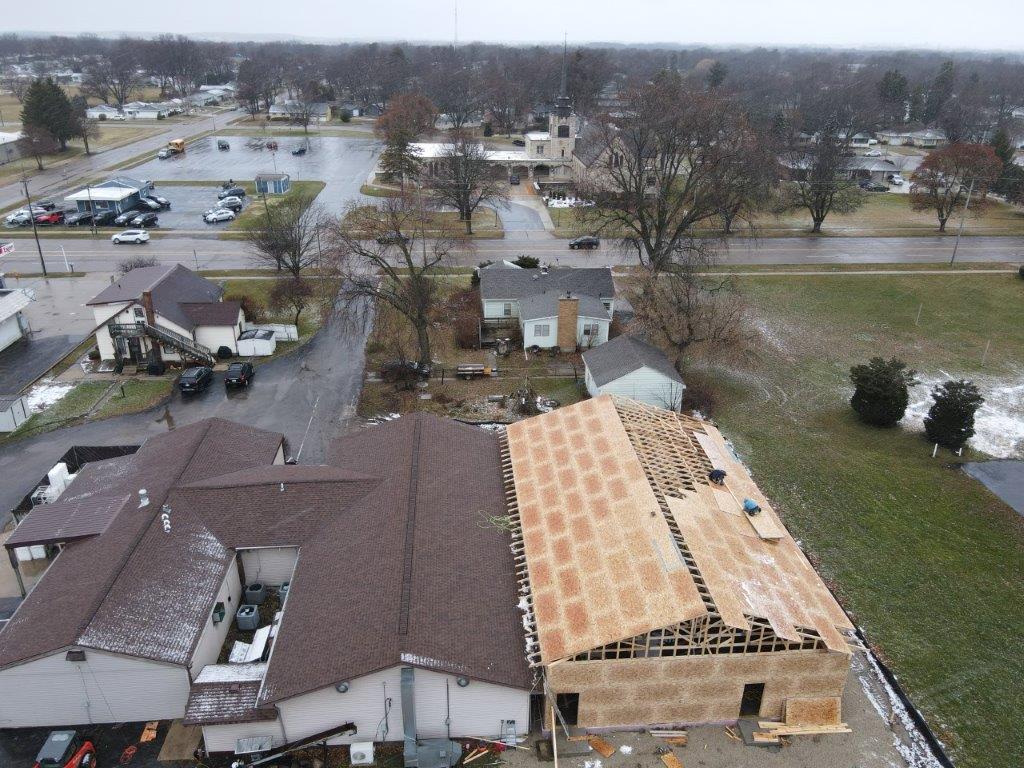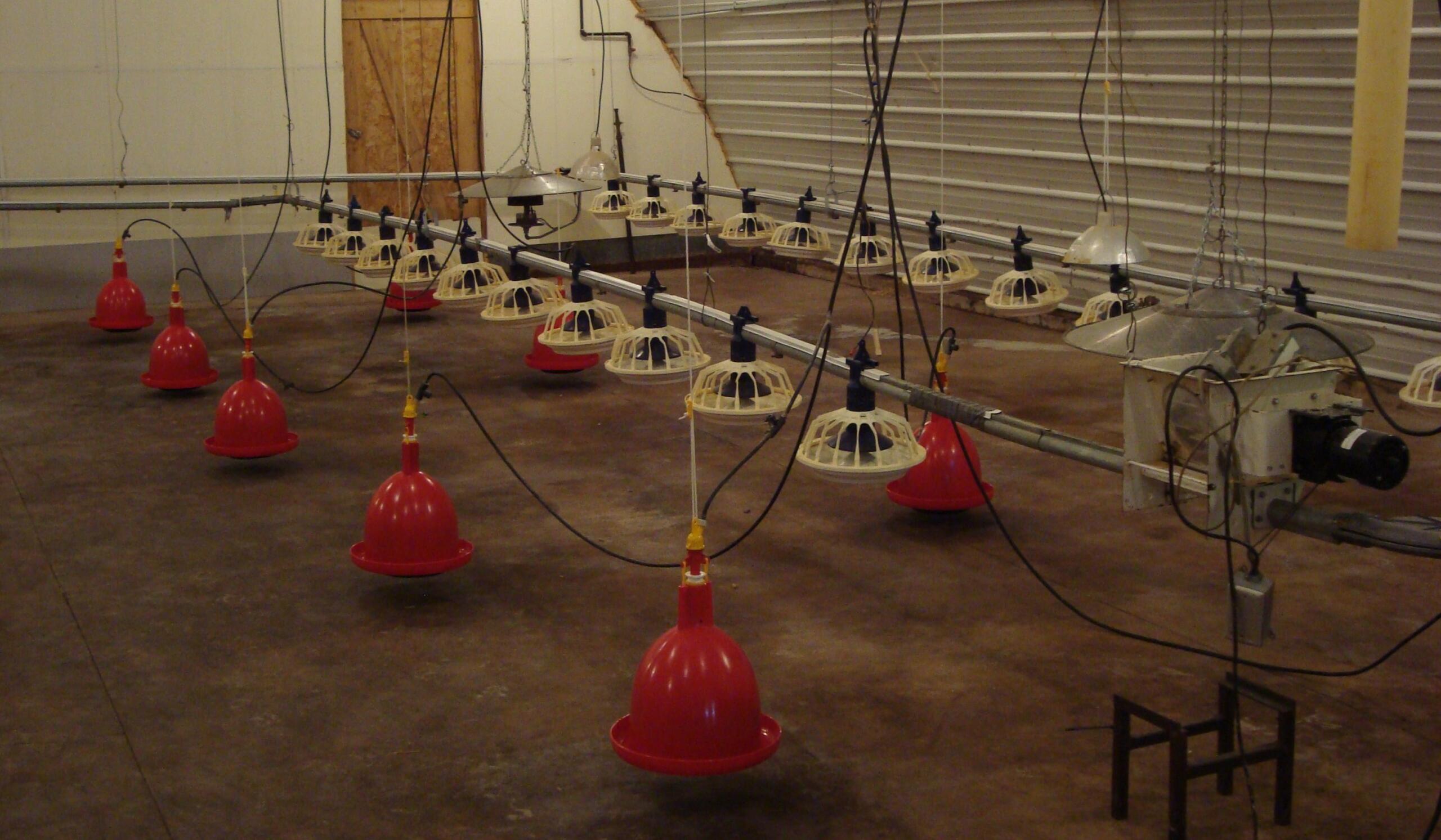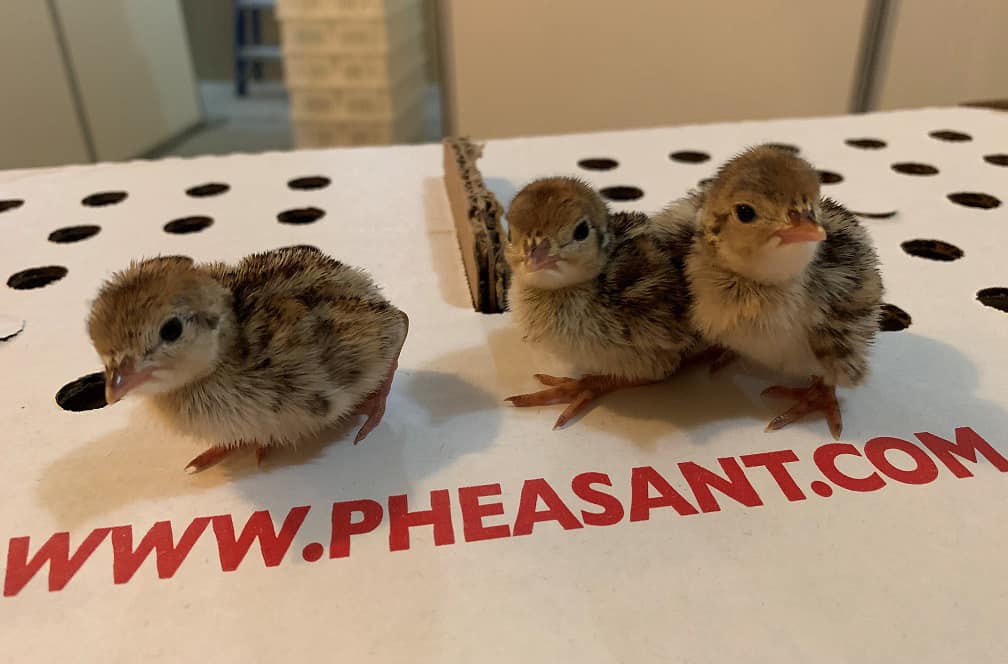Snicking Birds
Do not hesitate to call any of us here at MacFarlane Pheasants, Inc.; part of our everyday job is making sure our customers are satisfied. It is safe to say that all captive game bird flocks are exposed to one or more species of Mycoplasma. Mycoplasma are bacteria-like organisms that can invade the body of a bird and cause serious health problems, usually respiratory. Not all Mycoplasma species cause disease in pheasants or other game birds, in fact, the greater share do not. However, it is essential to be aware of this pathogen and the problems it may cause, especially in a breeder flock.
Pheasant breeder hens are extremely vulnerable to Mycoplasma outbreaks because of the stress associated with breeding season. It is at this time that you will see the highest incidence of symptoms and the greatest economic loss.
What are the symptoms? Look for these signs in this order.
- Nasal “snicking” is a hacking sound made as the birds try to clear their upper respiratory tract.
- Weepy, watering eyes causing the bird to shake its head and scratch at its face.
- Severe sinusitis, actually becoming so severe in some cases that the eyes swell shut due to a buildup of a thick firm exudate. At this point, the bird cannot eat or drink and perishes.
What are the economic losses?
- Infected hens will show lower egg production.
- Infected flocks experience lower fertility peaks and more rapid declines in fertility.
- Severe symptoms result in higher mortality.
Because it is virtually impossible to eradicate Mycoplasma on a game farm once it has been introduced, you must develop a program of control. Here on our farm we have instituted such a program in our breeder flock. Through following these steps, we have virtually eliminated any significant signs of Mycoplasma over the last five years.
Although most farms will not be able to implement all steps in this program, some are easily accomplished and worth doing.
This is a four-part plan that starts with the day-old chick.
- Day-old chicks that will be used for breeders are given a .1 ml injection of Tylan to kill any Mycoplasma that may have been vertically transmitted through the egg. We use 300 ml of steam-distilled water to 100 ml of Tylan 50 for this injection. Treatment with an antibiotic in the water for the first five days is an alternative to the injection, although not as effective. For water treatment, LS50 would be the drug of choice, unless Baytril becomes legal for game birds. Do not use Tylan, it is too bitter for drinking water.
- Maintain a high level of bio-security in the case of potential breeders to prevent re-infection. Use disinfectant foot baths with brushes at barn entrances and change them often. Limit admittance to barns and pens to prevent spread of pathogens from other sites. Make sure barns are thoroughly cleaned and disinfected between groups. Good bio-security will reduce the spread of Mycoplasma as well as other pathogens that may add to the stress factor.
- Treatment of the breeder flock with an autogenous bacterin for Mycoplasma. In 1996, we were finally able, with the help of consultants and veterinary specialists, to isolate type and grow the problem Mycoplasma species from our farm. This species (M. cloacale) along with two others that were present but not considered pathogenic, were made into a killed oil base bacterin. We administer this bacterin twice as a .5 ml subcutaneous injection at the base of the neck of all breeders. The first injection is given eight weeks prior to the estimated date of the first egg with the second coming four weeks later. We also do a booster injection of Tylan at the time of the second injection to kill any Mycoplasma that may not be tied up by the antibodies produced because of the bacterin.
- The last part of the plan is extremely important and can be implement by all breeder farms. This is the step of reducing possible sources of stress during the grow-out period as well as the breeding season. Throughout the rearing process, keep the birds free of other diseases and parasites that will challenge their immune system. Select your breeders from the groups with the lowest mortality rates and disease outbreaks. Give breeder flocks:
- Ample space (thirty square feet per bird).
- Plenty of watering and feeder space
- Water with vitamins
- Never allow birds to run out of feed or water
- Provide shelters
- Feed hay to provide distractions and reduce aggression.
Although this program is involved and time consuming, the cost of implementing it is far outweighed by the economic gain due to a healthy breeder flock.
Related Posts
Shipping Chicks Safely During Cold Weather Months
Read Post
Preparing Our Barns & Pens Each Spring
Read Post
A Comparison of Hatch Data Between Two Different Genetic Types of Pheasants
Read Post
DuPont Financial Analysis Model
Read Post
Hatchery News at MacFarlane Pheasants
Read Post
10 Hatching Tips for Incubating Pheasant Eggs Successfully
Read Post
6 Feed and Water Procedures to Keep MacFarlane Pheasants Healthy
Read Post
A Day in The Life of the Hatchery Manager and Chick Deliveries
Read Post
Take Advantage of These Free Resources
As the biggest game bird farm in the United States, we want to share our experience with you. Download our free resources below and get started.




